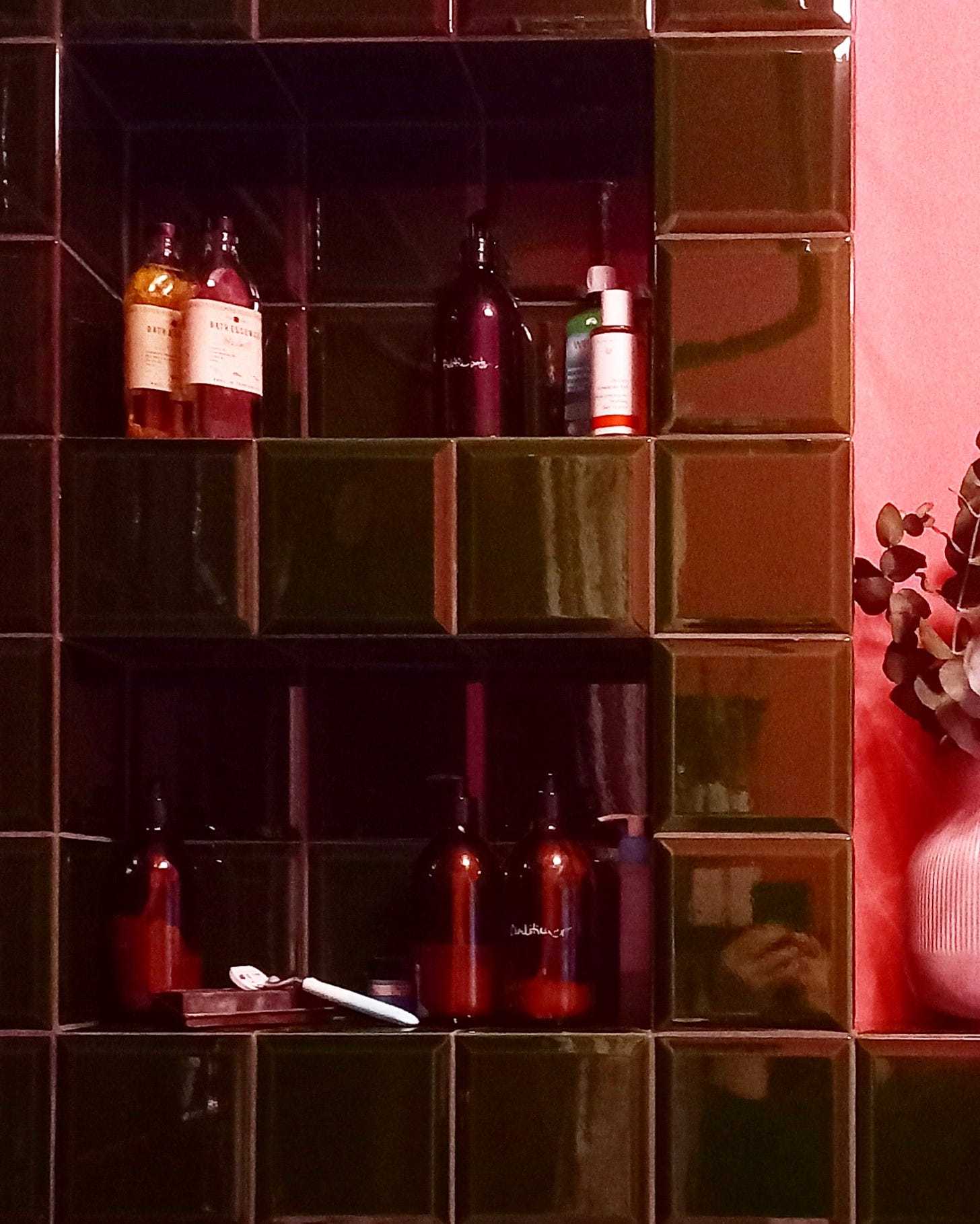If we’ve ever been out to some modern British small plates type restaurant together, there’s a good chance you’ve waited far too long for me to go to the bathroom. It’s not, you will understand, the wee that takes me so long. It’s the Aesop.
I can’t help it. I love it. The inevitable presence of those familiar bottles, fixed to the wall above the subway tiles and sleek black or antique brass taps, the scent of herbs and spices and aromatics as I run the water as hot as I can stand, the little rolled face cloth or six-ply paper towel I dry my hands on, the satisfying consistency of the cream I’ll slather on up to my elbows. I walk out of the restaurant with a full stomach, an empty bladder, clean hands, and hydrated elbows. What more could any of us ask for?
Why, then, considering my undeniable soap-adjacent joy, have I not taken the plunge and bought a matching set of bottles for my own bathroom at home? Why is this a pleasure I have restricted to restaurant bathrooms?
The answer is simple: I refuse to pay £33 for a plastic bottle. I’d love to tell you this was an objection on solely environmental or financial grounds. But I’ve spent money on far sillier things. No, the truth is, over the years I’ve simply cultivated a gentle resentment.
The thing is that the Aesop branding wants you to think you’ve walked into an ancient apothecary, gentrified by a clean sans-serif-loving graphic designer. The shops are soft-lit and moody, with dark amber bottles of potions and lotions lining the walls. There’s a vibe that’s sort of half science half ancient magic about it. There are shallow stone sinks for you to wash your hands and try the products in. Everything smells heavenly.
And everything about it screams: these are bottles from the past, when things came in glass.
I know that if the bottles lining the walls were made of glass, there’s a good chance I’d go bankrupt shopping there. I’d willingly drown in vetiver root, petitgrain and bergamot rind. But – luckily for my bank account, I suppose - only a handful of products have the weight and heft they look as though they should. Once you lift them off the shelf, it’s clear that the majority are sold in the same sort of brown plastic as that nice bubble bath that’s regularly on offer for £4 at Boots. Aesop have a few paragraphs on their website about how recycled and recyclable it is, which is nice. But recyclable or not, there’s something about the cheap plastic feel of it that makes me think of Rachel Green selling Phoebe on the Pottery Barn apothecary table.
Annoyingly, like it does on Phoebe, the aesthetic of the thing has worked *just* enough on me. It’s too compelling. I’ve been ruined. Aesop holds the promise (if not the reality) of glass, and now all I want is nice soap in glass bottles.
The rest of this hand soap centric post is not a recommendation of brands that come in glass bottles. For the same reasons I assume Aesop don’t do it, most others don’t either. No, the solution I have come to is to do it myself.

A few years ago, I bought a bunch of dark amber glass bottles with pump dispenser tops and started decanting my shampoo and conditioner and bubble bath into them. They look gorgeous around my bath, labelled with a white chalk pen, but it really is nothing more than an aesthetic thing. It’s the same old shampoo, squeezed out of plastic and into glass.
But, with handwash, it’s been game-changing. I bought a thick, unscented, antibacterial hand soap in a big five-litre bottle that I keep under the kitchen sink; it’s the ideal base for an individualised scent. I live in the sort of town where essential oils are very easy to come across, and so took myself to the high street and had a good old sniff around for something I loved. I’m sure you’re not far from a stockist either, but if you already know which scents work for you, you can buy them online.
I find that 500ml soap needs about 20 good drops of essential oil, so a couple of little bottles will be enough to scent the entire five litres. My favourite combination at the moment is rosemary, bergamot, and cedarwood, but there are no rules here. Once you have your oils and your soap, it is truly as simple as combining them. Mix the soap and oil in a jug and then transfer into the bottle, or layer up a little soap and a few drops of oil over and over, and then use the pump to stir it all together.
Is it Aesop? No.
Is the bottle glass? Yes.
Do I feel a little rush of joy every time I wash my hands? Also, yes.
The apothecary, she is me.




Kate you are so good at life. Q: for advanced level what can I add to make the scrubby Aesop grains?
In case you don't always want to do it yourself, Haeckels is a British brand that does use glass bottles and has refills of its wonderful fennel-scented sosp available in compostable packaging.